Bora Bora, an island that is part of the Leeward Islands, the Society Island Archipelago, and one of the 188 islands that make up French Polynesia.
In ancient times, Bora Bora was known in the local dialect as “Pora Pora Mai Te Pora” – which translates to ‘created by the gods.’
The water around Bora Bora is incredibly warm and is about 84 degrees (F) on average in the summer and about 29 degrees (F) during the winter months.
Bora Bora, with a population of 11,000 (2021), is located north and west of Tahiti in the South Pacific.
Bora Bora is a preferred, prestigious destination for luxury travelers and honeymooners.
Many call it “The Perfect Getaway Place”.
Bora Bora is best known for its bungalows which are built above the turquoise waters of its lagoon, pristine beaches, and jeep safaris to explore the island.
In addition, the island offers a vibrant culture mixed with warm hospitality.
There is phenomenal scuba diving, a turquoise lagoon, and a fantastic coral reef to explore by diving, glass-bottom boat, or snorkeling.
Without question, Bora Bora is one of the most beautiful places on the globe – surrounded by thousands of miles of Pacific Ocean waters.
The island is about 12 square miles and was once home to a US naval base in WW II.
At its center is what is left of an extinct volcano with two peaks, both climbable – Mt. Otemanu and Mt. Pahia, which were part of the island’s original formation.
Contents
So… Are There Sharks in Bora Bora?
Yes.
In fact, there is a local saying that ‘there are more sharks than people in French Polynesia.’
Much of the tourism in Bora Bora is water-related.
Pretty much everyone who visits Bora Bora will see a shark (or many).
The sheer number of sharks in Bora Bora is astounding.
This unique feature captures the attention of most tourists, with many excursions available for those who want to participate in a shark-feeding dive.
Sharks in Bora Bora are, for the most part, not dangerous to humans.
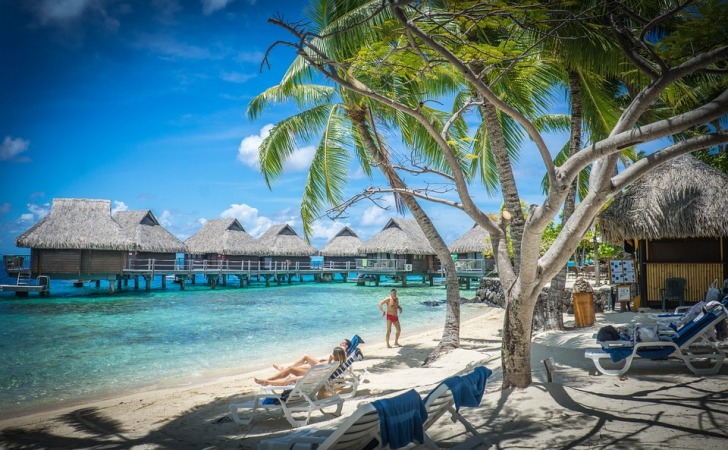
Sharks in Bora Bora are, for the most part, not dangerous to humans.
They inhabit the Bora Bora lagoon and are familiar with the presence of people.
The Black Tip Reef Sharks
The Black Tip Reef Shark is the most common shark seen in Bora Bora.
Black Tip Reef Sharks, as their name suggests, live around Bora Bora’s tropical coral reefs but prefer to swim along coastal water.
They are not aggressive and typically graze on small animals, fish, cephalopods, and crustaceans.
Black Tip Reef Sharks are also hunters of sea birds and sea snakes.
They are quite visible as their dorsal fin rises above the water, which is exposed above the water.
This is the primary reason that people and swimmers can spot them as they approach.
The Black Tip Reef Shark can grow as large as 1.6 meters (5+ feet), which makes them nearly impossible to miss.
The Sicklefin (or Sharptooth) Lemon Shark
Lemon Sharks feast primarily on fish and are most visible when on shark-feeding tours.
Lemon Sharks are hard to miss because their color is such a contrast to the lagoon waters’ bluish hue.
They tend not to be dangerous but have been known to defend themselves if provoked or alarmed.
Lemon Sharks can grow up upwards to 3.8 meters (12 feet) in length.
Their unique color makes them quite visible against the blueness of the lagoon’s backdrop.
The Oceanic Whitetip Shark
The Oceanic Whitetip Shark prefers the tropic and warm temperate oceans.
It is a slow-moving shark that tends to travel alone and is known as a ship-following shark.
The Oceanic Whitetip Shark’s rounded fins are the most distinguishing feature (and coveted ingredient) of the slow-moving shark with a stocky body.
Though slow-moving, it is opportunistic and aggressive, and shipwreck survivors are said to be at risk.
Because its big fins are highly coveted as the main ingredient in shark fin soup, recent studies suggest drastically dropping populations, and the whitetip shark, like other shark species, faces growing fishing pressure throughout its range.
The Hammerhead Shark
The Hammerhead Shark prefers the warmer coastal waters and is found around the world – including Bora Bora.
They are known for this distinctive head structure, which is flat and incredibly accurate in in-depth perception and vision.
They feast mainly on other fish, and most are considered critically endangered.
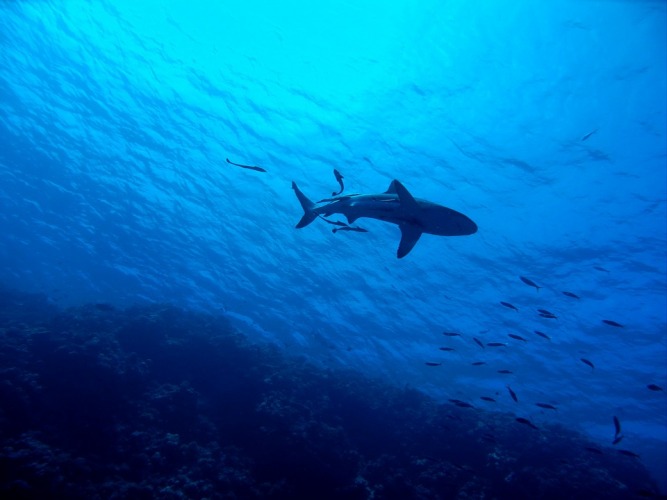
Is it Safe to Swim in Bora Bora?
Each year, pre-pandemic, approximately 200,000 tourists visit Bora Bora.
A local saying notes that you are much more likely to receive an injury from a falling coconut (hitting you in the head) than from a shark attack.
This tropical paradise is relatively safe for swimming, but with marine creatures nearby, it is always smart to swim cautiously.
There are jellyfish and sea urchins – as well as sharks that pose a minimal risk of danger.
The best way to manage an encounter is to respect them with an appropriate distance.
But note, that Bora Bora is one of a few places across the globe where there is almost complete certainty that you will see or swim with a shark.
Most snorkel tours and dive excursions offer shark feeding and stingray adventures, which are safe if led by a certified guide.
But note that shark attacks in and around Bora Bora are quite rare, with two recorded during the past 100 years.
The most recent occurred in 2015 when someone was bitten on a shark-feeding trip.
Do not just focus on sharks as sea urchins (and an unexpected bump into the coral reef) may pose a threat that may cause a puncture wound that is painful.
Interesting Shark Facts in Bora Bora
Bora Bora is located midway between Australia and South America – in the middle of the South Pacific Ocean.
Its unique location minimized the variety and quantity of land animals.
The western side of the island of Bora Bora is the reef’s empty space known as Tapu.
This area is considered one of the supreme locations for spotting reef and lemon sharks as well as manta rays and Napoleon wrasses.
Black Tip Reef Sharks have blacktip fins which are often visible if they are traveling in shallow reef locations.
The Lemon Shark’s color is used to help camouflage them against the tropical and sandy water in which they inhabit.
They are nocturnal feeders with eyesight that is so poor they must rely on electro receptivity to hunt for food.
Since 2006 and 2012, the French Polynesian government passed laws protecting sharks throughout the territory.
As a result of the shark fishing and commercialization of shark products ban, shark numbers have recovered and begun to flourish.
The manufacturing or sale of products of shark products, like necklaces made from shark teeth, is prohibited.
Buying a shark product in French Polynesia is considered a crime.
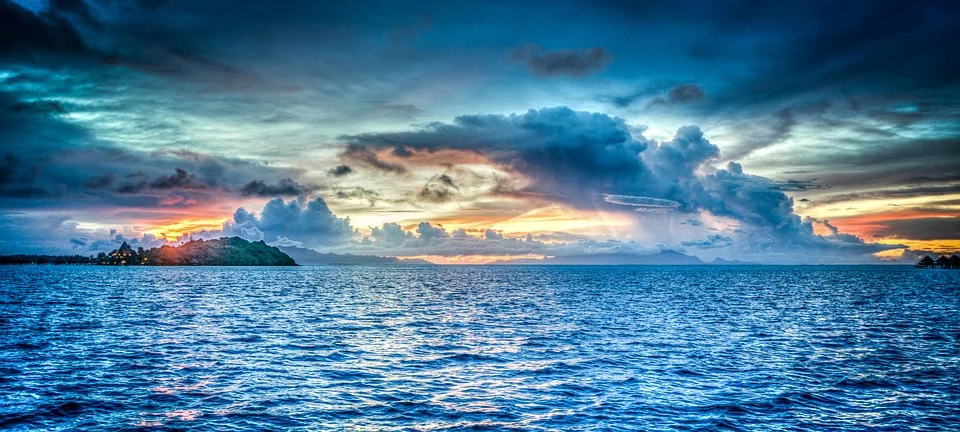
The majority of sharks inhabit saltwater locations.
However, several shark varieties have adapted to meet freshwater conditions characterized by less saline and colder waters.
Shark varieties are fundamentally categorized based on the water temperature of the surface in their habitat.
These are the primary categories of sharks:
- Polar Sharks – these marine animals inhabit the frigid waters (just above freezing) around the polar ice. A Dogfish Shark is an example of a polar shark.
- Tropical Sharks – as their name suggests, Tropical shark prefers warm water, typically in and around the equator. The Great Hammerhead – with its impressive 360-degree vision capacity, is a great example of a tropical shark.
- Temperate Sharks -these sharks are a mix of the above two categories, with the ability to inhabit and migrate as needed. The Great White Shark offers an example of a temperate shark that may migrate to tropical waters.
The following offers examples of freshwater sharks found throughout the world:
- The Speartooth Shark – the Speartooth Shark, is quite rare. This shark can inhabit saltwater or freshwater environments. It is native to Northern Australia and Papua New Guinea. With 29 rows of teeth on the upper and lower jaws, the Speartooth Shark can be quite dangerous.
- The Ganges Shark – this shark is a rare ‘river shark’ and native to India. It is now critically endangered. The Ganges Shark is a uniform brown or grey, and it grows to nearly six feet.
- The Bull Shark – The Bull Shark is considered both dangerous and aggressive. It has a strong ability to swim and is often found in swimming along shorelines or in freshwater lakes connected to rivers. Bull Sharks are carnivores that can be deadly.
- The Borneo River Shark – This shark is listed among the rarest freshwater sharks. Borneo River Sharks tend to be no more than 2.5 feet. They live in the Borneo rivers but can find their way to the Java Sea.
Three Tips for Swimming Safely in Shark-infested Waters
Preliminarily, it is important to reiterate the fact that shark attacks are relatively uncommon.
The year 2020 had only 129 cases reported globally.
But, even in safe conditions requires a swimmer to heed cautionary warnings that include the following:
- If you see a shark near you, leave the water calmly but quickly. Alert the lifeguard who can help others to safety quickly.
- Stay out of the water if it is cloudy or murky, as this poor visibility may make the shark mistakenly a swimmer for dinner.
- Avoid swimming where there is line fishing or nearby spearfishermen. This is because the bait used to fish may attract a nearby shark.
Summary
Without question, Bora Bora is one of the most beautiful places on the globe – surrounded by thousands of miles of Pacific Ocean waters.
The island is governed by France and is part of the Leeward Islands, the Society Island Archipelago, and French Polynesia.
Tourism, including shark excursions, is Bora Bora’s primary revenue source.
The sheer number of sharks in Bora Bora is astounding, and for the most part, these sharks are not dangerous and pose little threat to swimmers, boaters, and fishermen.
The Black Tip Reef is the most common shark seen in Bora Bora.
Lemon Sharks, feast mostly on fish and are most visible when on shark feeding tours.
The Oceanic Whitetip Shark prefers the tropic and warm temperate oceans.
Sources
- https://boraboraphotos.com/mount-otemanu-on-bora-bora-island/
- https://aqua.org/explore/exhibits/blacktip-reef
- https://www.sciencedirect.com/topics/medicine-and-dentistry/dorsal-fin
- https://oceana.org/marine-life/lemon-shark/
- https://www.fisheries.noaa.gov/species/oceanic-whitetip-shark
- https://kids.nationalgeographic.com/animals/fish/facts/hammerhead-shark
- https://www.dive-the-world.com/creatures-napoleon-wrasse.php
- https://oceana.org/marine-life/great-hammerhead-shark/
- https://theaquariumguide.com/articles/freshwater-sharks-real-sharks
- https://nt.gov.au/__data/assets/pdf_file/0009/206388/speartooth-shark.pdf
- https://india.mongabay.com/2020/06/the-rare-shark-of-the-ganga/
- https://www.nationalgeographic.com/animals/fish/facts/bull-shark
- https://animals.fandom.com/wiki/Borneo_River_Shark
- https://www.floridamuseum.ufl.edu/shark-attacks/yearly-worldwide-summary/
- https://www.damiengobron.com/sharks-in-bora-bora/
- https://kidadl.com/articles/thrilling-shark-facts-that-kids-will-love
Bora Bora Safety
Yes, Bora Bora is considered a safe travel destination, but if you have some doubts or want to explore, read the full report below.
Bora Bora Safety Overview
READ THE FULL REPORT: Bora Bora Safety Review
Safety Index:
- OVERALL RISK: LOW
- TRANSPORT & TAXIS RISK: MEDIUM
- PICKPOCKETS RISK: LOW
- NATURAL DISASTERS RISK: HIGH
- MUGGING RISK: LOW
- TERRORISM RISK: LOW
- SCAMS RISK: LOW
- WOMEN TRAVELERS RISK: LOW
Frequently Asked Questions
Although rare, shark bites do occur. Which part of the body is a shark most likely to attack?
The upper limbs and often in response to human action or error.
What is a shark’s average lifespan?
The average lifespan for sharks varies between 20 to 30 years.
How many liters of water can a whale shark take in through its gills per hour?
The whale shark can take in an amazing 6,000 liters each hour.
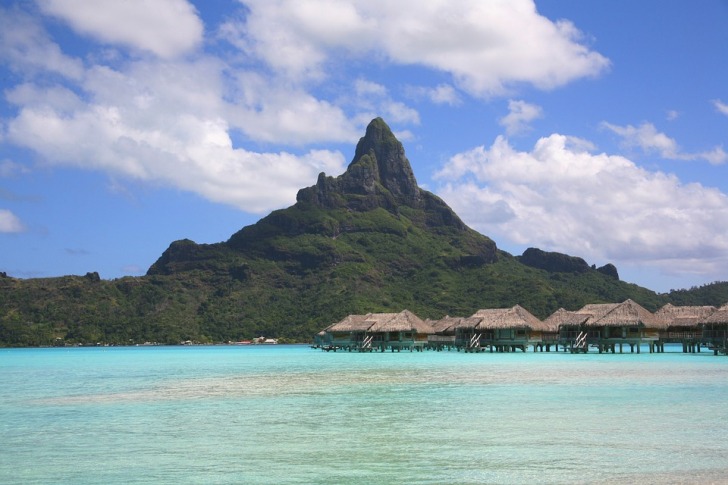
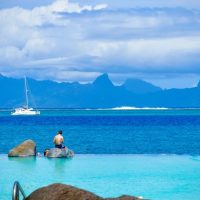
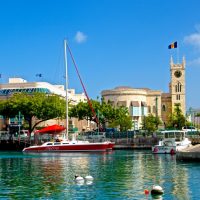









Bora Bora is a small island located in the South Pacific, part of French Polynesia. It is known for its crystal-clear waters, overwater bungalows, and stunning beaches, making it a popular destination for luxury travelers and honeymooners. With a population of only 11,000, Bora Bora is a relatively safe place to visit. However, as with any travel destination, it is always important to take precautions and be aware of potential risks.
One of the main concerns for travelers in Bora Bora is the presence of sharks in the surrounding waters. While shark attacks are rare, it is important to follow safety guidelines and avoid swimming in murky or cloudy waters. The government of French Polynesia has also implemented laws protecting sharks, which has helped to maintain a healthy population and reduce the risk of attacks.
Another potential safety concern in Bora Bora is the presence of jellyfish and sea urchins. These creatures can cause painful stings or punct
Bora Bora is a stunning destination known for its warm hospitality, luxury accommodations, and vibrant culture; however, it is also home to numerous sharks that pose little threat to humans.